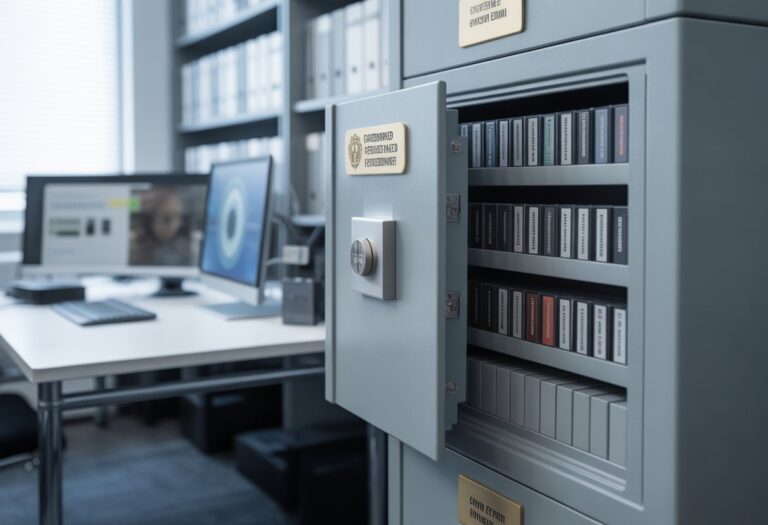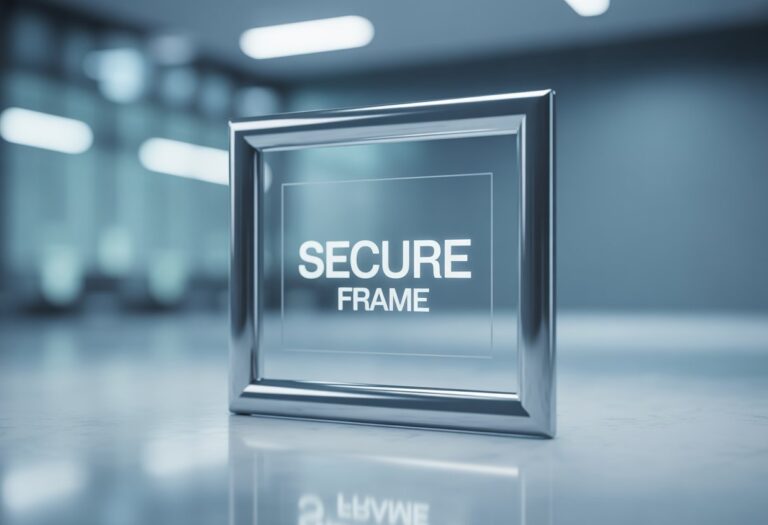How Can You Protect Your Home Computer Cyber Awareness Tips for Everyday Safety
Protecting your home computer starts with knowing how to spot and stop cyber threats before they cause harm. You can keep your computer safe by using trusted antivirus software, updating your system regularly, and using strong passwords with multi-factor authentication. These simple steps create a solid defense against viruses, spyware, and phishing attacks.
Being aware of cyber risks means understanding how hackers might try to access your personal information. You should also secure your home Wi-Fi and avoid downloading software from unknown sources. By staying alert and following easy security tips, you can protect your devices and keep your data private.
Cyber awareness isn’t just about technology—it’s about building good habits that keep you and your family safe online. Learning how to protect your home computer helps you feel confident while working, browsing, or connecting with others. This guide will show you what you need to know to stay secure in today’s digital world.
Understanding Cyber Threats and Why Protection Matters

You need to know the kinds of dangers your home computer faces and how these threats can affect your personal information. Knowing what’s at risk helps you take the right steps to keep your data and identity safe.
Common Cyber Threats Facing Home Computers
Your home computer is exposed to many cyber threats like malware, which includes viruses, spyware, and ransomware. Malware can slow down your computer, steal information, or lock your files until you pay a ransom.
Phishing is another common threat. It tricks you into giving away passwords or credit card details by pretending to be a trusted source, like a bank or a friend.
Spyware secretly watches what you do online. It can gather personal details without your knowledge.
Understanding these threats helps you stay alert and avoid risky downloads or suspicious links.
Risks of Identity Theft and Data Loss
If a cybercriminal gets access to your computer, they can steal important personal details like your Social Security number, bank info, or passwords. This is called identity theft.
They might use your data to open accounts, take money, or cause other problems that take time and money to fix.
Data loss can happen if malware deletes or locks your files. Losing important documents or photos can be frustrating or even harmful, especially if you don’t have backups.
Taking steps to protect your computer helps keep your identity and data safe from these risks.
Importance of Cybersecurity Awareness
You are the first line of defense in protecting your computer. Being aware of how cyber threats work and spotting signs of danger can stop many attacks before they start.
Talking with your family about safe habits online, like not clicking unknown links or using strong passwords, goes a long way.
Using tools like a Virtual Private Network (VPN) and keeping your software updated improves your security.
Cybersecurity awareness helps you avoid scams and keeps your private information private. It’s a smart way to protect your digital life every day.
Essential Security Tools for Your Home Computer

Protecting your home computer means using specific tools that stop viruses, block hackers, and keep your data private. These tools work together to fight malware, control internet traffic, and secure your connections.
Using Antivirus and Anti-Malware Software
You should have trusted antivirus software installed on your computer. This software scans files and programs to find and remove viruses and other harmful software called malware. Antivirus programs update regularly to catch new threats.
Anti-malware software is similar but focuses on stopping different or newer types of malware that antivirus might miss. Many security programs now combine antivirus and anti-malware features in one package.
Run full system scans at least once a week and keep the software updated. This helps prevent malware infections that can steal your information or slow down your computer.
Setting Up Firewalls for Stronger Defense
A firewall acts like a gatekeeper for your computer. It blocks unauthorized access and filters incoming and outgoing internet traffic based on security rules you set or are built-in.
Most operating systems come with a built-in firewall, but you can also use a separate hardware or software firewall for extra protection. Firewalls stop hackers from reaching your computer and prevent harmful programs from sending your data out.
Make sure your firewall is always active. If you use a home router, it probably has a firewall feature too. Enable it to protect all devices connected to your network.
The Role of VPNs and Encryption
A VPN, or virtual private network, hides your IP address and creates a secure tunnel for your internet activity. This stops people on public Wi-Fi or hackers from spying on what you do online.
Encryption scrambles your data so only the right person can read it. Good VPNs use strong encryption to protect everything you send or receive.
Using a VPN is especially smart when you check bank accounts, send emails, or do anything private on public or shared Wi-Fi networks. This adds a layer of protection beyond antivirus and firewalls.
Smart Practices to Boost Cyber Awareness
Protecting your home computer starts with a few clear actions. Using strong passwords, adding extra layers of login security, and keeping your software current can make a big difference. These steps help keep hackers from getting in and protect your personal information.
Creating and Managing Strong, Unique Passwords
Your passwords are the first line of defense. Use strong passwords that mix letters, numbers, and symbols. Avoid common or easy-to-guess passwords like “123456” or “password.” Each account should have a unique password to stop one hack from breaching all your accounts.
A password manager can help you create and store these unique passwords. It saves you from remembering complex passwords and keeps them safe. Let the manager generate strong passwords for you, and never reuse the same password on multiple sites.
Enabling Two-Factor and Multi-Factor Authentication
Two-factor authentication (2FA) adds an extra step to logging in. After typing your password, you might enter a code sent to your phone. This makes it much harder for someone to access your account without your phone.
Multi-factor authentication (MFA) goes even further by asking for two or more types of proof, like a fingerprint plus a password. You should enable 2FA or MFA on all important accounts, especially email, banking, and social media.
Keeping Software and Systems Up to Date
Running the latest software updates is key. Updates often contain security patches that fix holes hackers could use. This includes your computer’s operating system, web browsers, and any apps you use.
Turn on automatic updates when possible. This way, you won’t forget to install important security fixes. Regularly updating software protects your computer and personal data from new threats and malware.
Protecting Sensitive Information and Data Backup
Keeping your personal information safe is important for home computer security. You need to watch out for tricks like fake emails, use cloud and devices safely, and always back up your important files. These steps help protect your data from being stolen or lost.
Recognizing and Preventing Phishing Scams
Phishing scams use fake emails or messages to trick you into giving away passwords or personal info. These emails may look real but often ask you to click suspicious links or download unsafe files.
To avoid phishing attacks, always check the sender’s email address carefully. Don’t open attachments or click links unless you’re sure they’re safe. Look out for poor spelling or strange requests that seem unusual.
If you get a message asking for sensitive info, verify by contacting the company directly through their official website or phone number. You can also use antivirus software that warns you about phishing attempts as you use your computer.
Safe Use of Cloud Storage and Removable Media
Using cloud storage is great for saving files as long as you keep your accounts secure. Always use strong passwords and turn on multi-factor authentication when possible. This adds an extra step to prove it’s really you signing in.
For removable media like USB drives or external hard drives, only connect them to trusted devices. These can carry viruses or data spillage risks if used carelessly. Scan removable media with antivirus before opening files.
Avoid leaving sensitive information on removable media if it gets lost or stolen. Encrypt important data when storing it on cloud or physical devices to protect it from unauthorized access.
Best Practices for Data Backup
Backing up your data protects you from losing important files due to hardware failure, ransomware, or accidents. Use both external storage devices and cloud backup services for better security.
Make a regular schedule to back up files like documents, photos, and work-related data. Store backups separately from your main computer to avoid both being affected by cyber attacks or theft.
Test your backups sometimes to be sure you can access the files when needed. Keep multiple copies if possible, and update them after making important changes to your data.


